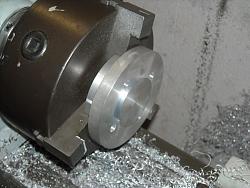ooooooh, to much fun!!! So many things going on here. Playing with the materials of the horns is very interesting. But like I learned when trying to mix one of our albums it's VERY easy to get lost. My old friend of almost 50yrs who we went through the audio stuff together and he taught me how to play guitar, is now a pro live sound audio engineer. He is in another world to me but he can dumb it down enough for me to understand some concepts.
Several of the major ones is just like you have mentioned many times is crossover points and resonance peaks. And then the real gorilla in the room time alignment. This is why all the pros went to active crossovers years ago. Now they have moved on and everything is computer controlled in the amps and networked into the engineers laptop along with the digital mixers.
Through him I bought an old copy of SMAARTLive, the program the pro's use to analyze the rig. Everything from time align to realtime frequency analysis and a ton of other stuff that makes my head swim. I used it to set the eq on my live PA by hooking it through a mobilepre into my laptop and it would show me the peaks that were causing feedback and I used a 31 band eq to tame the peaks/kill the feedback. Worked ok, but it was a little like using a hammer to kill flys.
Then along came a guy who was looking to sell a dbx DriveRack 260. Amazing piece of kit. Crossover, realtime analyzer, compressor, notch filter, parametric eq, 31 band eq, feedback buster, delay and auto eq, all in one rack space and has a plug to jack directly into the laptop where you can configure and daisy chain all these things any way you want, right on the laptop. Their bottom of the pro line unit. Now obsolete with my new line6 m20D digital mixer.
I mention all of this because, bravo! You are going in the right direction with analysis. But I hope you know you are in for even more complication
My current upgrade dream is to make some new speaker cabs using my spare set off ESS drivers in a 2x10" modified line transmission cab with another Hafler amp for biamp and use the 260 and SMAARTLIVE to tune and align the system.
I too am working with gas welding aluminum. There is a guy here who teaches and sells all the stuff. Not easy or cheap, but very satisfying and another thing I want to have time to do. Love the stuff with your motor cycle....or do I see motorcycle frame with a scooter drive? Always thought that made more sense, lower center of gravity and they certainly have enough HP to get me in trouble.
I'm more low tech these days, in love with my ICE recumbent tadpole trike. My dream is to build a aluminum bodied velomobile...maybe even electric assist. But I have more dreams than I have time left


 LinkBack URL
LinkBack URL About LinkBacks
About LinkBacks



 Reply With Quote
Reply With Quote










 . I remember that a front chamber (not compression) introduce a high pass filter, but in this case it's not our problem
. I remember that a front chamber (not compression) introduce a high pass filter, but in this case it's not our problem 




Bookmarks